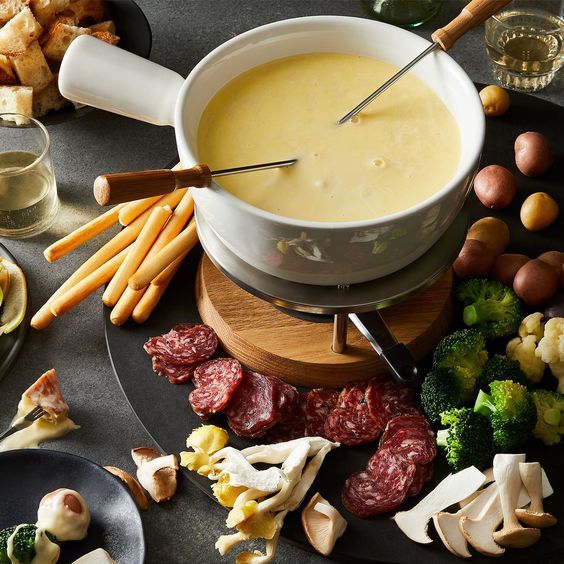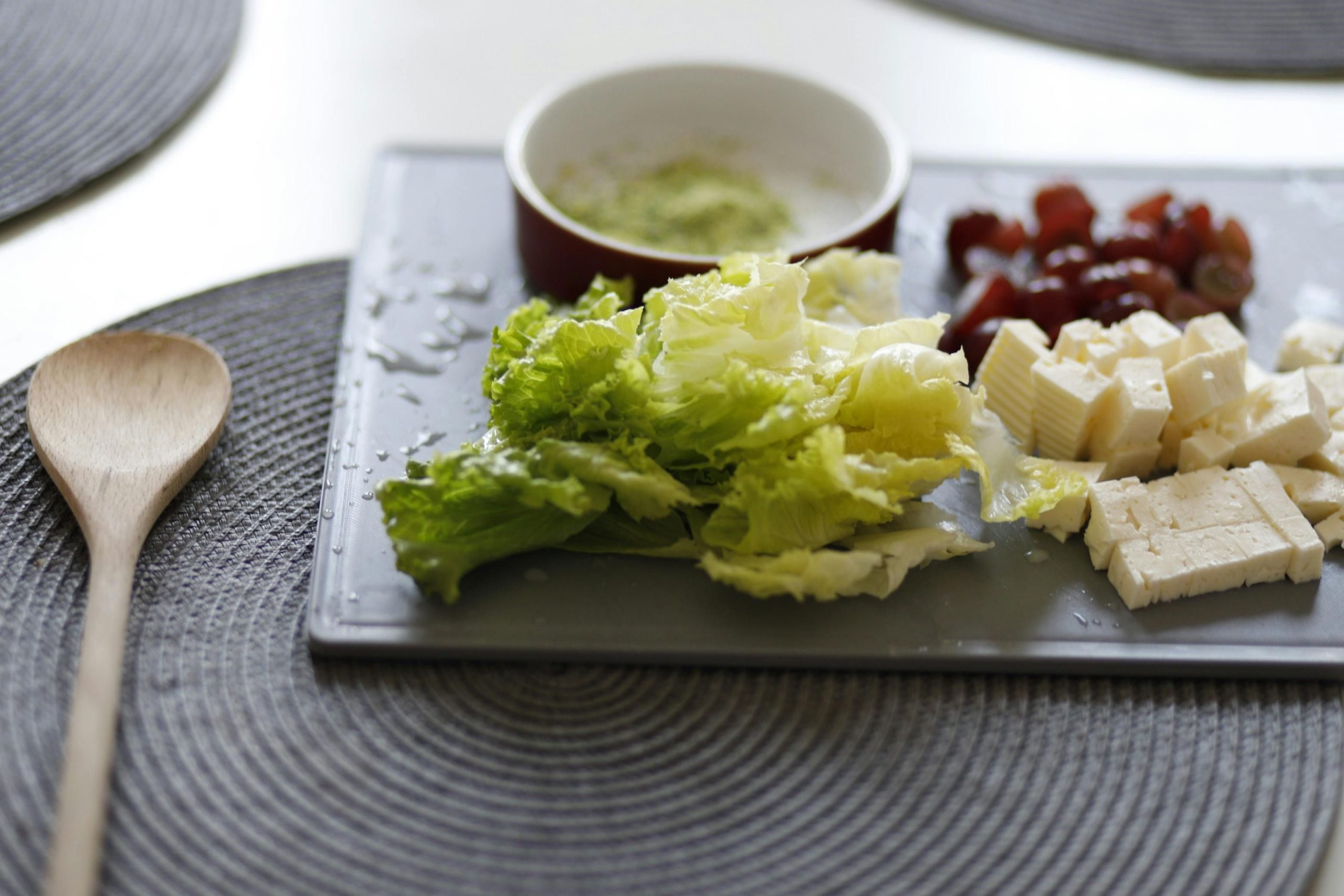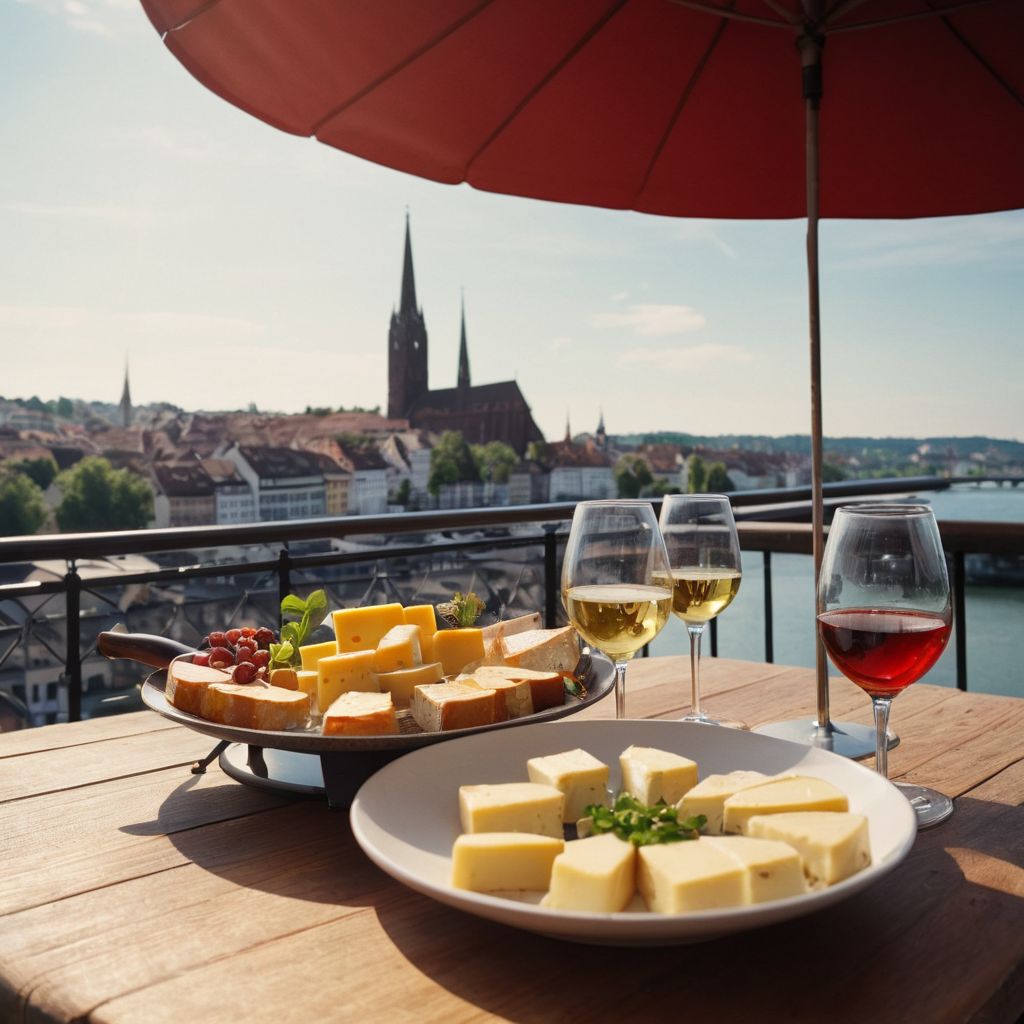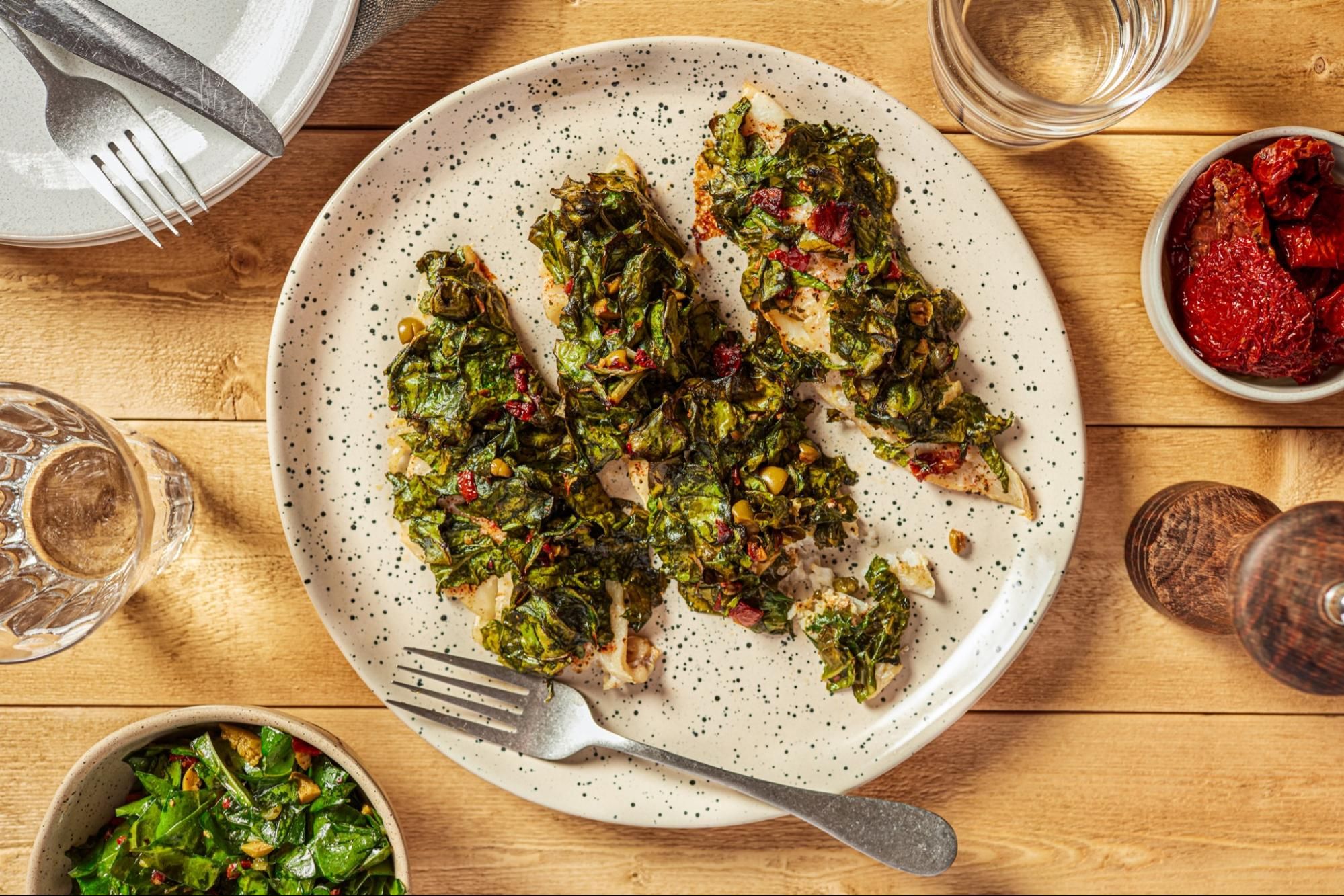Imagine a pot of molten cheese, its aroma filling the air, inviting you to dip a piece of crusty bread into its gooey embrace.
Finding the perfect fondue can be a daunting task, with so many variations and recipes to choose from.
Swiss fondue, a decadent concoction of melted Gruyère and other regional cheeses like Emmentaler and Raclette, seasoned with splashes of kirsch, wine, and a hint of garlic, stands as the epitome of this beloved dish.
In this article, we’ll dive into the origins of Swiss fondue, explore the key ingredients that make it so irresistible, and guide you through the etiquette of enjoying it, ensuring you can host the ultimate cheese experience right at home.
The Origins of Fondue: Tracing the Etymology

The term “fondue” originates from the French verb fondre, which means “to melt.” This etymology perfectly captures the essence of the dish—a pot of melted cheese, into which diners dip bread. The concept of melting various ingredients together to create a communal dish is deeply rooted in Swiss tradition, reflecting the country’s cultural emphasis on sharing and community.
Over time, the term “fondue” has evolved to encompass a broader range of culinary practices, extending beyond cheese to include chocolate fondue and fondue bourguignonne, among others. Despite these variations, cheese fondue remains the most iconic, symbolising Swiss hospitality and the simple pleasures of sharing a meal. The evolution of the term reflects the dish’s adaptability and enduring popularity, both within Switzerland and internationally.
Swiss Fondue: A Historical Perspective
Swiss fondue’s journey from a pragmatic meal to a national symbol is a testament to Switzerland’s culinary innovation and cultural pride. Initially, fondue served as a practical solution for Swiss farmers in the Alps, who combined leftover cheese and stale bread with a dash of wine to create a nourishing meal during the harsh winter months. This humble beginning laid the foundation for what would become a cherished Swiss tradition, celebrated for its warmth and conviviality.
The Swiss Cheese Union played a pivotal role in the popularisation of Swiss fondue in the 1930s, promoting it as a way to boost cheese consumption. This campaign transformed fondue from a simple peasant dish to a celebrated national dish, enjoyed across social classes. The Swiss fondue’s ascent to national prominence illustrates how culinary traditions can evolve to reflect a country’s identity, bringing people together over a shared love for food.
Key Ingredients for Crafting the Perfect Swiss Fondue

Crafting the perfect Swiss fondue starts with understanding its key ingredients. At its heart, Swiss fondue is a celebration of cheese, with traditional recipes calling for a blend of Swiss cheeses that melt beautifully together. The choice of cheese not only influences the texture but also the flavor profile of the fondue. However, cheese isn’t the only star of the show. A splash of white wine and a hint of garlic add depth and aroma, turning a simple cheese melt into an exquisite dish.
Alongside cheese and white wine, other ingredients play supporting but crucial roles. Lemon juice is often added to balance the richness of the cheese with its brightness, while a dash of kirsch, a cherry brandy, introduces a subtle fruitiness that complements the cheese wonderfully. Cornstarch or flour is used to thicken the fondue, ensuring it coats every piece of bread perfectly. These ingredients, when combined, create a harmonious blend that is the essence of Swiss fondue.
Preparing Swiss Fondue: A Step-by-Step Guide
Preparing Swiss fondue is an art that begins with rubbing a garlic clove around the inside of the fondue pot to infuse it with flavor. Next, the cheese, often a mix of Gruyère and another Swiss cheese like Emmentaler, is gradually added to the pot along with white wine. The key is to stir continuously in a figure-eight motion to ensure the cheese melts evenly and doesn’t stick to the bottom.
As the cheese begins to melt, a mixture of cornstarch and a little more wine is added to the pot to help thicken the fondue. Once all the cheese has melted into a smooth, creamy consistency, a dash of lemon juice and kirsch is stirred in. The fondue is then seasoned with a pinch of nutmeg and pepper, according to taste. It’s crucial to keep the fondue warm on a low heat to maintain its perfect texture as you dip and enjoy.
Choosing the Best Cheese for Swiss Fondue

Selecting the best cheese for your Swiss fondue is crucial for achieving the perfect melt and flavor. The traditional choice is fondue moitié-moitié, a 50/50 blend of Gruyère and Vacherin Fribourgeois, known for their excellent melting qualities and rich taste. Gruyère adds a creamy texture and a slight nuttiness, while Vacherin Fribourgeois brings a smooth melt and a more pronounced flavor.
For those looking to explore beyond the classic moitié-moitié, Emmentaler and Raclette are excellent additions. Emmentaler brings a milder, fruity note, while Raclette adds a wonderful creaminess and depth. Mixing cheeses from different regions can introduce a variety of flavors, creating a more complex and intriguing fondue. Remember, the quality of the cheese directly impacts the final dish, so opt for the best you can find.
Fondue Variations: Swiss, French, and Beyond
Fondue, while rooted deeply in Swiss culture, has transcended borders, leading to a rich tapestry of variations across the Alpine regions. The Swiss version, known for its use of local cheeses like Gruyère and Emmentaler, has inspired adaptations in neighbouring countries. In France, the fondue Savoyarde incorporates cheeses from the Haute-Savoie region such as Comté and Beaufort, while the Italian Fonduta alla Valdostana favours Fontina cheese, creating a uniquely smooth blend.
Beyond cheese, fondue variations also include the method of cooking and ingredients. For example:
- Fondue bourguignonne involves diners cooking meat in hot oil, offering a savory twist to the traditional cheese fondue.
- Fondue Bacchus substitutes wine for oil, infusing the dish with rich, aromatic flavours. These variations highlight the versatility of fondue, adapting to local tastes and ingredients, while maintaining the communal spirit that defines the fondue experience.
How to Enjoy Swiss Fondue: Etiquette and Tips

Enjoying Swiss fondue is about more than just dipping bread into cheese; it’s an experience steeped in tradition and etiquette. To truly savour this Swiss delicacy, understanding the proper way to partake is essential. Whether you’re gathered around the table with friends or enjoying a quiet meal at home, Swiss fondue offers a unique opportunity to connect and share in a meal that is both communal and intimate.
Fondue etiquette plays a significant role in this culinary tradition. From the way you stir the cheese to how you dip your bread, every aspect of the fondue experience is guided by customs designed to enhance the enjoyment and ensure the meal goes smoothly. Adhering to these simple yet important rules can transform a simple meal into an unforgettable experience, allowing you to enjoy Swiss fondue as it was meant to be savoured.
Essential Utensils for Swiss Fondue: A Guide
When it comes to Swiss fondue, having the right utensils is key. The traditional fondue pot, or ‘caquelon’, is essential for both preparing and serving the fondue. Made from either clay or iron, these pots are designed to distribute heat evenly, ensuring the cheese melts perfectly without burning. Alongside the pot, a fondue rechaud with an adjustable flame keeps the cheese at the ideal temperature throughout the meal.
Fondue forks are another must-have. These long forks, specifically designed for fondue, allow guests to dip their bread into the cheese without getting too close to the heat. Each guest should have their own set of forks to prevent mix-ups. Small plates and napkins are also recommended, providing a place for guests to rest their dipped bread and ensuring a mess-free experience. Remember, the right utensils not only make the meal more enjoyable but also adhere to fondue etiquette, enhancing the overall dining experience.
Bread and Swiss Fondue: Making the Perfect Match

Choosing the right type of bread for Swiss fondue is crucial for the perfect pairing. A crusty white bread, such as a baguette or Halbweissbrot, is traditionally used, offering the ideal texture and flavour to complement the creamy cheese. The bread should be cut into bite-sized pieces, ensuring each piece has enough crust to securely hold onto the fondue fork. To avoid the faux pas of losing your bread in the cheese, ensure it’s speared firmly. This not only adheres to fondue etiquette but also prevents any awkward moments during the meal.
Drink Pairings for Swiss Fondue: A Culinary Guide

When enjoying Swiss fondue, selecting the right drink to accompany this cheesy delight is as crucial as choosing the best cheese. The traditional choice for a drink pairing is a white wine, specifically Fendant, a slightly sparkling wine from the Valais region made with Chasselas grapes. This wine complements the rich, creamy texture of the fondue without overpowering its delicate flavors. Other white wines from the Savoy region, such as Apremont or Roussette, also make excellent pairings, offering a refreshing contrast to the fondue’s richness.
For those who prefer a non-alcoholic option, plain black tea serves as a great alternative. It’s recommended to avoid cold drinks as they can cause the cheese to congeal, making it harder to digest. The warmth of the tea not only complements the heat of the fondue but also aids in digestion, making it a comfortable and enjoyable pairing. Whether you opt for the traditional Fendant or a cup of black tea, the right drink can significantly enhance your Swiss fondue dining experience.
Perfecting the Temperature for Swiss Fondue
Achieving the perfect temperature for Swiss fondue is crucial for a delightful dining experience. It’s all about finding that sweet spot where the cheese maintains a smooth and creamy consistency without becoming too runny or burning at the bottom. This balance ensures that the fondue is enjoyable from the first dip to the last, making temperature control a key aspect of the fondue-making process.
To keep the fondue at this ideal temperature, it’s recommended to use a fondue burner or a candle under the pot, adjusting the flame as necessary. Here are some tips to help you maintain the right heat:
- Start with a moderate flame to melt the cheese and then reduce it to keep the fondue warm.
- Stir the fondue regularly to prevent it from sticking to the bottom and to distribute the heat evenly.
- If you notice the cheese starting to bubble too vigorously, it’s a sign to turn down the heat.
“La Religieuse”: The Fondue Tradition Explained
The tradition of “la religieuse” refers to the prized crust of toasted cheese that forms at the bottom of the fondue pot when the temperature has been correctly maintained throughout the meal. This golden, crispy layer is named “la religieuse”, or “the nun”, because of its resemblance to a nun’s cap. Sharing this delicacy among diners is considered a highlight of the Swiss fondue experience, symbolising the joy of communal dining and the satisfaction of a meal well enjoyed.
“Le Coup du Milieu”: A Swiss Fondue Ritual
“Le Coup du Milieu” is a cherished Swiss fondue ritual, involving a small glass of spirits, typically kirsch, consumed about halfway through the meal. This tradition is believed to aid digestion and reinvigorate the appetite, making it a delightful interlude in the fondue dining experience. While its digestive benefits might be debated, the coup du milieu serves as a moment of pause and refreshment, enhancing the communal joy of the meal. It embodies the Swiss fondue ethos of not just eating, but truly savouring and enjoying the company and the moment.
Elevate Your Fondue Swiss Experience with INDULGE
To truly elevate your Swiss fondue experience, consider exploring Zurich with INDULGE’s curated culinary tours. These unique tours not only dive deep into Switzerland’s rich cheese history but also offer an unparalleled opportunity to savour authentic Swiss fondue in its traditional setting. With INDULGE, you’re not just tasting cheese; you’re immersing yourself in a cultural journey that blends the flavours and stories behind Switzerland’s famed culinary tradition.
INDULGE’s offerings go beyond the ordinary, providing exclusive dining experiences that showcase the best of Swiss cuisine. Highlights of these tours include:
- Introduction to local cheese artisans
- Guided tastings of premium Swiss fondue
- Insights into the history and making of fondue
These experiences are designed to deepen your appreciation for Swiss fondue, making every bite a discovery. To embark on this gastronomic adventure, visit INDULGE and book your next culinary journey in Zurich.
Frequently Asked Questions
Welches ist das beste Fondue?
Das beste Fondue ist subjektiv und hängt von persönlichen Vorlieben ab. Traditionell wird das Schweizer Fondue jedoch hoch geschätzt und besteht aus einer Mischung von Schweizer Käsen wie Gruyère und Vacherin Fribourgeois. Diese Käse sind bekannt für ihre ausgezeichneten Schmelzeigenschaften und reichen Geschmack, was sie zu einer beliebten Wahl für viele macht.
Was ist der Hauptbestandteil eines traditionellen Schweizer Fondues?
Der Hauptbestandteil eines traditionellen Schweizer Fondues ist Käse. Typischerweise wird eine Mischung aus Schweizer Käsen verwendet, darunter Gruyère und Vacherin Fribourgeois, die für ihre hervorragenden Schmelzeigenschaften und ihren reichen Geschmack bekannt sind.
Welcher Alkohol ist in Fondue?
In einem traditionellen Schweizer Fondue wird Kirsch, ein Kirschschnaps, verwendet. Kirsch fügt eine subtile Fruchtigkeit hinzu, die den Käse wunderbar ergänzt. Zusätzlich wird oft auch Weißwein hinzugefügt, um dem Fondue Tiefe und Aroma zu verleihen.








